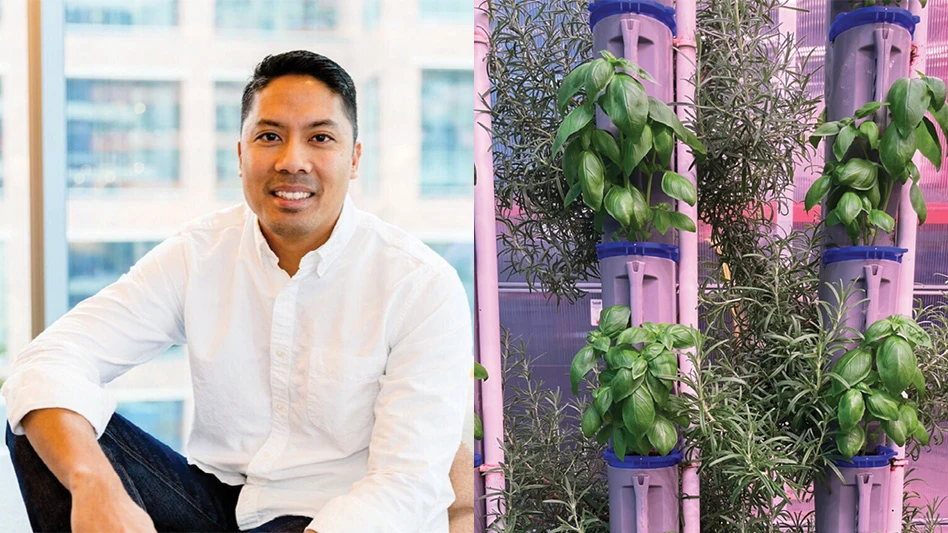
From childhood, Abhay Thosar has dedicated his life to food cultivation. He holds a Ph.D. in plant physiology from Gujarat Agricultural University and has more than a decade of experience leading horticultural teams and research at top-tier corporate greenhouses and nurseries, including Philips Lighting and Fluence. As director of horticulture services at Fluence, Thosar is responsible for managing a global team of horticulture specialists that works to enhance how cultivators grow crops, optimize lighting strategies and increase profitability in operations.
Produce Grower: Why are more produce growers considering LED retrofits now than any time before?
Abhay Thosar: When it was first developed, LED lighting was thought of as a niche application technology. However, over the last decade, research and increased LED adoption have proven that LED technology is the best lighting solution for a variety of crops, including, but not limited to, strawberries, tomatoes, lettuce, cucumbers and bell peppers.
First, the light spectrum for legacy high-pressure sodium (HPS) fixtures was originally developed for human eyes, rather than for optimizing and stimulating plant growth. In contrast, advanced LED light spectra were developed specifically to promote plant growth. The large volume of research performed with LEDs continues to enhance our understanding of LED best practices for optimizing plant morphology, health and yield, moving cultivators away from legacy HPS fixtures that don’t have the same spectral flexibility or returns. HPS lighting is becoming out of date, making maintenance gradually more expensive. The industry is rapidly approaching a point where manufacturers will stop producing HPS bulbs altogether.
Second, HPS fixtures are costing cultivators money. Not only are HPS fixtures less energy efficient than LEDs, they also demand high energy consumption from other mechanical systems to maintain calibrated cultivation environments because of their high heat output. In a time of increasingly tight industry margins and energy concerns across the world, an LED retrofit — or replacing existing HPS fixtures with LEDs — is a prudent long-term financial decision from energy efficiency and annual maintenance cost standpoints.
PG: What are the key benefits of an LED retrofit to produce growers?
AT: The most popular reason for switching to LEDs is improving energy efficiency to decrease costs. Because supplemental lighting is necessary for winter greenhouse production, electrical costs will always affect an operation’s bottom line and notoriously inefficient HPS fixtures cut even deeper into it when energy costs fluctuate. Growers gain more control over energy consumption from lighting and mechanical systems, as well as environmental parameters, when they switch to LED lighting technology.
Another notable benefit of switching to LEDs is improved crop quality and yield. We know that being able to increase target photosynthetic photon flux density (PPFD) via supplemental lighting is crucial to delivering outstanding results but, because of the infrared heat emission, it is challenging for growers to target higher supplemental light levels with HPS fixtures. The enhanced ability for higher light levels with the correct spectrum that LEDs offer optimizes plant production and quality.
PG: What should a grower expect after completing an LED retrofit?
AT: The biggest difference growers will encounter with a retrofit is improved control over environmental factors other than light. Because LEDs do not emit infrared heat like HPS fixtures, growers gain separate control over heating and lighting in the greenhouse space. LEDs help growers achieve a more fine-tuned approach to optimizing plant growth, allowing them to maintain precise and constant temperatures, humidity levels and a more tailored irrigation approach. Any grower is only as good as they are flexible and knowledgeable, but working with an LED lighting partner like Fluence provides growers with access to horticultural service specialists to help design their lighting strategy and environmental parameters to optimize plant productivity and quality.

Explore the December 2022 Issue
Check out more from this issue and find your next story to read.
Latest from Produce Grower
- Consumer Curiosity Report explores food, nutrition opinions from 'early adopters'
- Your comprehensive guide to Indoor Ag-Con ’25
- Sollum Technologies and Indoor Ag-Con announce recipients of Sollum Student Scholarship
- 80 Acres Farms expands to Georgia, Texas and Colorado
- This fast and agile robotic insect could someday aid in mechanical pollination
- AmericanHort urges exclusion of sphagnum peat moss from proposed Canadian tariff
- The Growth Industry Episode 2: Emily Showalter on how Willoway Nurseries transformed its business
- Moleaer expands irrigation product line featuring nanobubble technology





